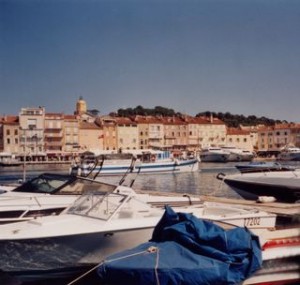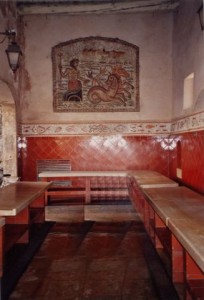Located in the north of Paris, a small town called Chantilly is standing in the lake. It takes only 30 minutes by SNCF, a French local train, and you can find a peaceful and quiet place. It’s hard to imagine the town is only 30 minutes away from the big city.
There is a tourist information office near the station, where they give you useful booklets and a map. After you check the route to the castle, walk through the woods and you will come to the horse race track. The building you see on your right is the horse museum. The castle is over the field.
The origin of this castle goes back to the families of Orgemont, Montmorency, Bourbon-Conde and Orleans. It was the 14th through the 15th century.
Chantilly can’t compete with the Versailles Palace in spectacles, but the atmosphere is very calm and relaxing. Especially when I visited there in the morning, there were only a few people.
There is a beautiful park behind the castle, too. Some birds were resting in the water. In winter the water freezes, so I saw birds skating there!
Chantilly Castle |
skating birds |
decoration on the wall |
Inside the castle is full of art collections.
The Petit Chateau of Chantilly, built by Jean Bullant around 1560, has many beautifully decorated rooms. On the first floor, you can find the main room of the Princes of Conde, designed between the 17th and 18th centuries. When you go downstairs, you can visit more rooms which were designed for the Duke of Aumale in the 19th century.
The Grand Chateau was razed to the ground during the Revolution and rebuilt on the foundations of the 14th century Orgemont fortress, by Henri d’Orleans (1822–1897), Duke of Aumale and the son of Louis-Philippe, who donated Chantilly to the institute de France in 1886. He stipulated that the original aspect of the Musee Conde should be respected, and this explains the unique lay out in this museum. The paintings are hung side by side in rows, regardless of the time or the categories of schools.
Hunting Scenes
It is surprising to see a great number of paintings. You can learn a lot about the past of Paris. For example, French people have been with dogs long since. Even in some important people’s portraits you see dogs next to them.
I also found some ceramics which were sent from Japan in the Edo period. It was amazing. I didn’t expect to see something Japanese here, and I was impressed thinking about those items came to this country all the way from Japan by boat, taking many months.
Here is one more thing. “Chantilly” means fresh cream in French. They say this is the original place of whipped cream, but there was no big advertisement in the town. But I really wanted to taste the cream here and found one restaurant on the way back to the station. Actually it was a nice restaurant. I had a crepe with fresh cream, and my boyfriend had a bowl of fresh cream. It was delicious. They also have other specialties. The sign says “BIO”. They serve healthy traditional foods. La Belle Bio (22,rue du Connetable 60500 / 03 44 57 02 25)
La Belle Bio
Access
SNCF Chantilly-Gouvieux
30 min from Gare du Nord
45 min from Chatelet-les-Halles (RER line D)
Open Hours
March through October 31st 10:00 am—6:00 pm
November through February 28th 10:30 am—12:45 pm, 2:00 pm—5:00 pm
Holiday: Tuesday
The park is available every day
Racetrack and Hose Museum near the castle

